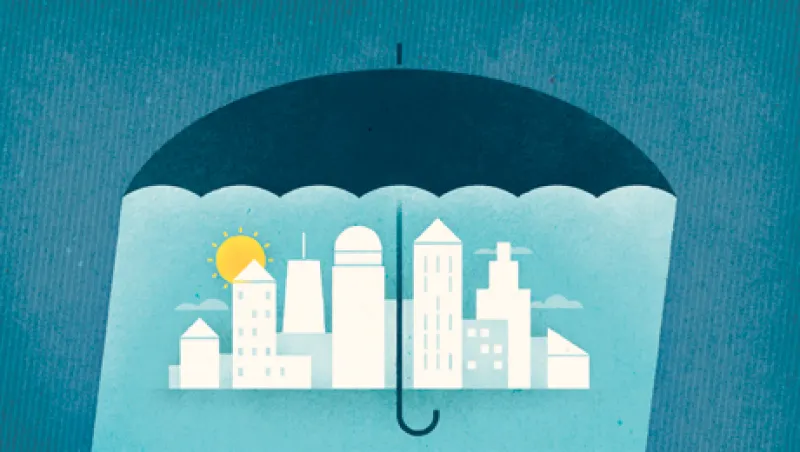Catastrophes can boost rather than slash an economy’s output if heavily insured against, according to an exhaustive study of more than 2,000 disasters around the world over half a century. However, the “typical” catastrophe causes a significant immediate fall in domestic product growth, and two to three times as much as this in the long term.
The research, published by the Bank for International Settlements (BIS) in Basel last month, can help forecasters work out the likely effect of catastrophes on the economy, and therefore on corporate profits, in the aftermath of disasters such as Hurricane Sandy. The paper — “Unmitigated disasters? New evidence on the macroeconomic cost of natural catastrophes,” — is, according to the authors, the first to calculate the impact of cataclysms on output by allowing for the effects of risk transfer, including catastrophe bonds and other forms of insurance.
“Our main and novel finding is that it is the uninsured part of catastrophe-related losses that drives macroeconomic costs, whereas well-insured catastrophes can be inconsequential or even positive for economic activity,” wrote the authors, Goetz von Peter of BIS, Sebastian von Dahlen of the International Association of Insurance Supervisors in Basel and Sweta Saxena of the International Monetary Fund in Washington.
Insurance payments directly boost gross domestic product by funding building and other investment in reconstruction, according to the study. High levels of insurance also reduce the effects of a catastrophe by encouraging “the transfer of knowledge,” the report argues. To minimize their losses from future events, insurers insist on mitigating measures such as earthquake-resistant buildings. They also send in disaster management experts after a cataclysm, whose expertise limits losses and speeds up reconstruction. “By helping to limit losses and resume business, these initiatives also foster recovery and promote growth,” the report explains.
However, of the 2,476 major catastrophes studied between 1960 and 2011, nearly 60 percent were entirely uninsured. As a result, the authors calculate that on average a major catastrophe takes 1 percent off GDP growth immediately and about 2.6 percent in total after allowing for long-term after-effects.
The research illustrates the decisive role of insurance in determining whether catastrophes are disastrous for economies or not by describing the effects of two earthquakes of similar force in two small nations in 2010, Haiti and New Zealand. (The study defines a major catastrophe as a disaster that caused at least 100 deaths or $250 million in losses, measured in 2011 money.)
In Haiti less than 1 percent of losses were insured. As a result, the earthquake shaved 8.6 percentage points off GDP, causing a decline in output of 5.1 percent in the year it struck.
In New Zealand, 81 percent of the direct losses from the earthquake were insured. Consequently, “local experts” estimated “the immediate growth-enhancing effects of reconstruction” at 0.4 percent, with additional gains of a similar size expected over the medium term. Unlike in most countries, earthquake insurance had been made largely mandatory in New Zealand.
In cases where a lack of insurance meant that a catastrophe hurt GDP, the research finds a consistent pattern to this damage. Most cases, it says, “share the regularity that the initial impact on growth gives way to a tentative rebound in the year after the disaster, followed by a further drag on growth in the second year after the event.” In instances where a catastrophe boosts growth, “the strongest growth-enhancing effects from insured losses appear in the three years following a catastrophe, in line with the average timing of insurance payouts.”
The BIS paper’s findings could help investors estimate the effect on the U.S. economy of Hurricane Sandy, which hit the heavily insured eastern U.S. in late October. The evidence so far is mixed. The unemployment rate fell in November. However, economists blame a surprise October drop in consumer spending on the event.
Ban Ki-moon, the United Nations secretary-general, described “abnormal” weather as “the new normal,” in a speech in December at the Doha climate change talks — echoing the view of many meteorologists that some kinds of catastrophes, such as flooding, are likely to become more frequent. This expectation increases the incentive for investors to assess the effects of disasters accurately.






